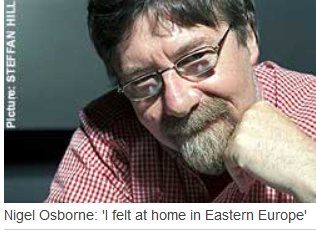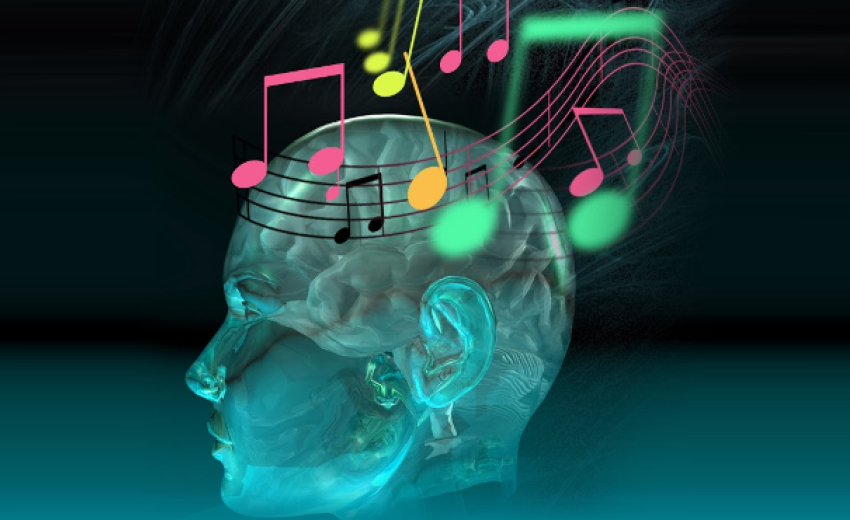 Mar 29, 2015: Musician, human rights activist, therapist, Nigel Osborne wears many hats. They all come together in the work of this gentle giant from the University of Edinburgh, who has been using music to help heal trauma-afflicted people such as war veterans and children. Osborne was in India recently to advise the Indian Head Injury Foundation in Jodhpur on using music for rehabilitation. He has also been working with differently disabled children in Chennai. He spoke to Namita Devidayal. Excerpts:
Mar 29, 2015: Musician, human rights activist, therapist, Nigel Osborne wears many hats. They all come together in the work of this gentle giant from the University of Edinburgh, who has been using music to help heal trauma-afflicted people such as war veterans and children. Osborne was in India recently to advise the Indian Head Injury Foundation in Jodhpur on using music for rehabilitation. He has also been working with differently disabled children in Chennai. He spoke to Namita Devidayal. Excerpts:
How did you get involved in music therapy and, more specifically, in using music to help heal trauma-affected children?
I think from the beginning of my interest in music, I was interested in the effect it had, why it made me feel the way it did. Later, I chose to perform in experimental settings and contexts - so we played in hospitals, psychiatric units, schools and all sorts of situations where we saw that the experience was very transforming. I started seeing music as something that could have a social mission. I saw how powerful music could be personally, socially, philosophically and even politically. For example, I spent a lot of time in Eastern Europe, where culture was already being used as a means of social change. When the siege of Sarajevo happened, I started working with children, more to distract them from horrible circumstances, not even using the word 'therapy'. Then, the ministry of health— what was left of it— approached us and asked us to create a therapeutic program, which attracted attention in other places in the world.
Does Indian classical music offer anything special in this regard?
Indian classical music is particularly powerful in therapeutic processes because in my opinion it encompasses the whole human evolution and the whole of our personal development in it, in the way the raga is developed. For example, the drone, the saa is not just one note, but it contains all. The whole harmonic series - the natural behaviour of symmetrically vibrating objects - is present in that. That's why in learning this music, we spend so long singing just sa. It is a note that has no beginning and end. It envelopes and contains our consciousness. We become enfolded in it. That's just the beginning. When the aalaap begins, these kinds of movements have a recognised impact on the brain cells and they relate to a very ancient form of communication between human beings which existed before language. Then, we move to the ultimate sophisticated kind of note structure which are picked up by the higher cognitive functions of the brain. Our emotions get sculpted by these. Finally, rhythm in Indian classical music excites the most primitive as well as higher cognitive areas and stimulates the motor cortex. There is a high level of abstraction and design, which are as much intellectual as they are emotional.
You have said music is a means of engaging human empathy. Can you please elaborate?
I believe we develop empathy largely through the medium of sound, voice and music. I work on a project called 'communicative musicality' and we look at the relationships and communication between mothers and small babies across the world. We discovered very similar patterns that had the qualities of music. This is the first communication of empathy, perhaps more powerful than touch. So music begins very early in our lives as a means of communicating emotion.
Is there scientific evidence to suggest that music can transform brain chemistry, heart functioning and also effect breathing?
There is very strong evidence. Take the traumatised children I work with. In post-traumatic stress disorder, children's heart rate is usually raised by at least five to six beats on average because the autonomic nervous system is on high alert. Music can help regulate that and change the way the heart beats. Similarly, deep in the brain, in the medulla oblongata, there are circuits of neurons that control how we breathe and music seems to have an effect on these neurons. Active singing is very helpful for traumatised children because it helps control breath. Music is very highly interactive with our levels of stress hormone, cortisol. It can also help regulate dopamine, seratonin and many other hormones and neurotransmitters.
You have talked about psycho-biological-social model where the mind, body and society meet. Where does music fit into this triumvirate as an agent for social change and reconstruction?
The problems of traumatised children are physiological, psychological as well as social. Their self-respect and sense of identity are affected. Through music we can rebuild holistically all those things at once. For example, a song which can work on their bodies, minds, as well as make them sing with one another. We are bio-social beings. By being together, we often transform the way our bodies behave - for example, people have used music in the fields to coordinate actions, synchronisation.
There is recent neuroscientific evidence to suggest music can change genes. Tell us more.
I never imagined we'd be able to control brain waves by musical rhythms. We have increasing evidence music can have an epigenetic effect, such as slowing dementia. Human beings have been using music to heal themselves from time immemorial but this was the first time arts and science had come together.
Where do you believe this therapy can be used most effectively in India?
To use more of it in special education would be a good idea. Then of course I would like to see it in hospitals.
